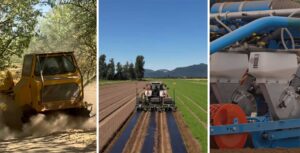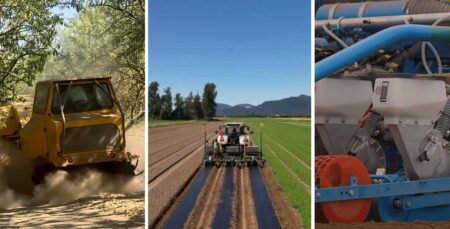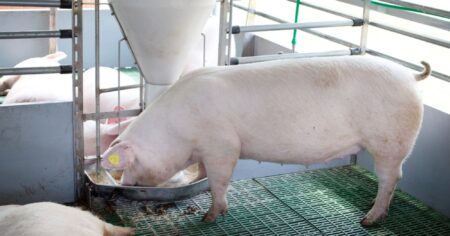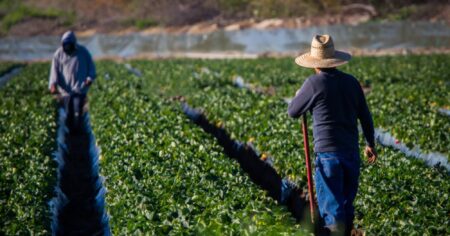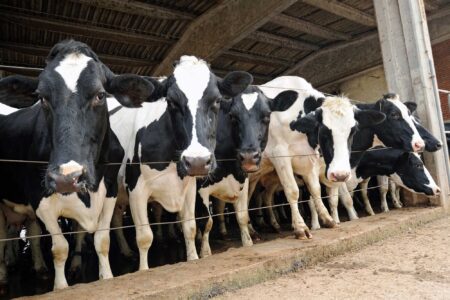Most herbicides are formulated with some form of residual activity, extending the life of their weed control. But when herbicides persist in the soil too long, they can cause problems for the following year’s crop.
“We want residual control, in some of our herbicides, to control our weeds for three to five weeks,” said Wesley Everman, an Iowa State University Extension weed specialist. “We usually don’t want [control] to last beyond a couple [of] months. It really becomes an issue if it persists for 10 or more months because then, we’re impacting next year’s crop, and its growth, and potentially its yield.”
How Herbicides Break Down
Many herbicides are broken down by microbial degradation. In short, the carbon bonds and molecules within a herbicide formula serve as a food source for soil microbes. “The faster the microbes do their work, the less herbicide activity we have over time,” Everman said.
Moisture content plays a significant role in how much herbicides move within the soil. High moisture con-tent can lead to herbicides leaching or moving farther down into the soil profile. Low moisture content can keep herbicides concentrated near the soil surface and reduce microbe activity, meaning herbicide carryover problems often follow dry years.
Soil temperature, organic matter content, and pH can also impact microbe activity and herbicide persistence.
Other Risk Factors
Herbicide carryover is often seen following a late-planted crop, due to the shift in the growing season. “Usually, we’re done spraying [herbicides] by the end of June,” said Drake Copeland, a technical service manager at FMC. “If a crop didn’t get planted in time, you’re making those [herbicide] applications in August. Therefore, you’re coming back and planting earlier than you normally do after that herbicide application.”
The amount of herbicide applied can also increase risk of herbicide injury. For example, a herbicide with a higher dosage rate has a greater likelihood of remaining in the soil beyond the label’s rotation restriction period.
Read the Label
The easiest way to avoid significant crop injury is to follow the herbicide’s label. The plant-back and rotation restrictions outline how long the herbicide may linger in the soil.
“It’s a really good tool to use, just because the companies put in a lot of work to understand the environmental fate [of herbicides],” Copeland said. “It all depends on how sensitive the crop is and the herbicide carryover for that specific active ingredient.”
While extreme weather events could impact a herbicide’s longevity in the soil, in most cases, abiding by the label restrictions prevent injury.
Some rotations require a longer period of time between herbicide application and planting. Soybeans, for example, are sensitive to many herbicides and often see planting restrictions longer than a typical growing season.
Testing Your Soil
If you’re concerned about a specific field, Eric Jones, an Extension weed management specialist at South Dakota State University, said he recommends conducting a bioassay of the soil. To do this, fill a flowerpot with soil from the field. Plant seeds of your intended crop in the pot, and give it water and light.
“That can give you an idea of how much herbicide is in that soil,” Jones said. “The big challenge is really quantifying how much herbicide is within that soil. Tests can give you a part-per-billion reading, but that doesn’t re-ally tell you much. If you do this little bioassay and watch how the seeds germinate and emerge, you can tell if there’s enough herbicide to significantly impact the crop.”
Courtesy of South Dakota State University
Symptoms of Herbicide Injury
While herbicides can stop a weed seed from germinating, herbicide injury to crops often appears after the plant has been established.
Injury symptoms differ, depending on the type of herbicide present. Common symptoms include bleach-ing from HPPD inhibitors (Group 27), yellowing and stunted crop growth from ALS inhibitors (Group 2), and tiger striping on corn from fomesafen found in PPO inhibitors (Group 14).
“There’s really no ‘one size fits all’ for what a farmer should look for,” Jones said. “Whatever they treated that field with in the prior grow-ing season, that is the injury they should be looking for.”
Minimizing Impact
If herbicide carryover is a concern, consider decisions before planting. If possible, plant the same crop as the year before to avoid the issue altogether.
The planting date can also be delayed a little to allow for more time following a herbicide application, although good planting conditions should still be prioritized.
If herbicide carryover occurs, there’s little to be done in season. In most cases, the crop is able to “grow out” of minor injury symptoms. Although there’s no set yield loss expectation, farmers may find that herbicide carryover exacerbates other problems.
“Sometimes, it’s just lack of vigor, so the crop doesn’t get off to a good start and doesn’t grow as well,” Everman said. “It’s hard to measure that yield impact on the back end…It’s more of an additive effect that makes other things worse.”
In severe cases, replanting is an option, although a last resort.
Cover Crop Considerations
In-season herbicide applications can greatly limit fall cover crop options.
For example, herbicides typically used to manage grass weeds could negatively impact cereal rye stands. To maximize success, consider rotation plans and herbicide choice.
“The biggest benefit of cover crops is having good, established germination,” said Eric Jones, an Extension weed management specialist at South Dakota State University. “If you have anything that reduces germination, the benefits of those cover crops start to decrease quite a bit.”
Visit the Weeds & Disease Playbook for more content like this.



